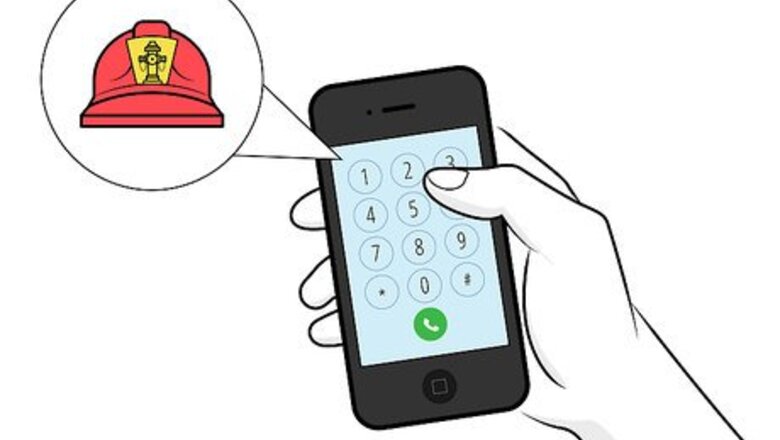
views
- PULL the pin out of the fire extinguisher’s handle.
- AIM the nozzle at the base of the flames.
- SQUEEZE or press the handles together to activate the extinguisher.
- SWEEP or move the nozzle side to side at the base of the flames.
Putting Out a Fire with PASS
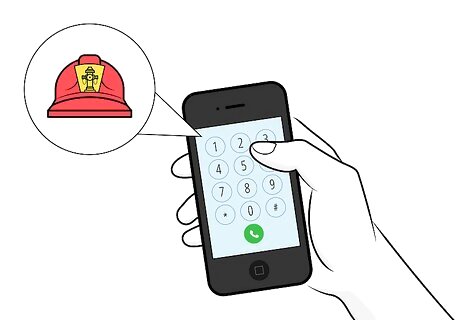
Direct someone to call 911 or call them yourself. Evacuate everybody from the area first. Then, tell somebody to call the fire department or emergency services once that person is safely outside. Even if you're able to extinguish the fire on your own, it’s best to have the fire department on the way in case something happens. When the fire department arrives, they can ensure that the fire has been extinguished properly. Just because something looks safe doesn’t necessarily mean it is.
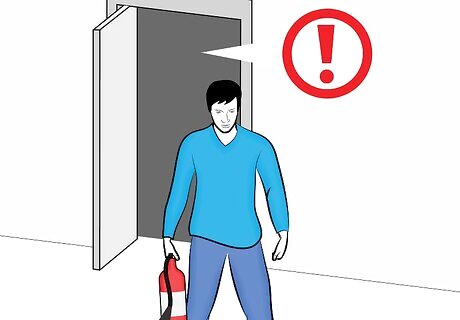
Locate the nearest exit and stand with your back to it. Before using a fire extinguisher to extinguish a fire, it’s important to take some safety precautions. Locate the closest exit, and position yourself so your back is toward it. This will make it easier for you to escape if you have to leave quickly in an emergency.
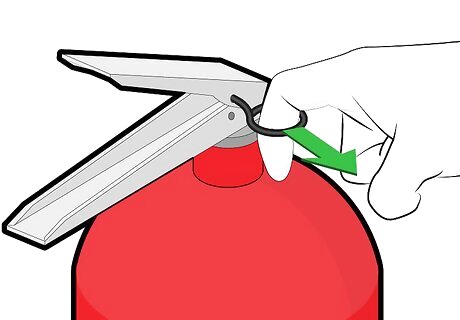
Pull the pin. The first step of PASS is “pull.” Every fire extinguisher has a pin inserted in the handle that prevents the fire extinguisher from being discharged by accident. Grab the ring and pull the pin out from the side of the handle. Now that the extinguisher is ready to discharge, point the nozzle away from you. Fire extinguishers in non-residential or high/medium density residential areas may have a zip tie attached to the pin to let the fire department know they've been used. The zip tie is made to be easily broken.
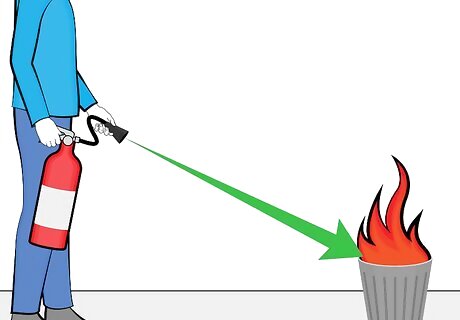
Aim the hose at the base of the fire. The second step of PASS is “aim.” Hold the lower handle lever (the carrying handle) with one hand and grab the hose or nozzle with the other. Point the hose directly at the base of the fire. Avoid aiming the hose at the flames. This isn't the fuel source, and you won't get much progress. With carbon dioxide extinguishers, keep your hands away from the plastic discharge horn, which gets extremely cold.
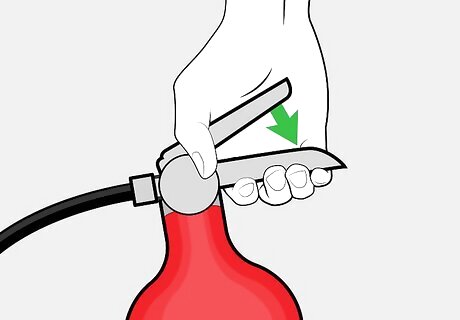
Squeeze the lever. The third step of PASS is “squeeze.” To release the extinguishing agent, squeeze the levers together with one hand while aiming the hose at the base of the fire with the other. Apply slow and even pressure when you squeeze the levers. To stop the extinguisher, let go of the levers.
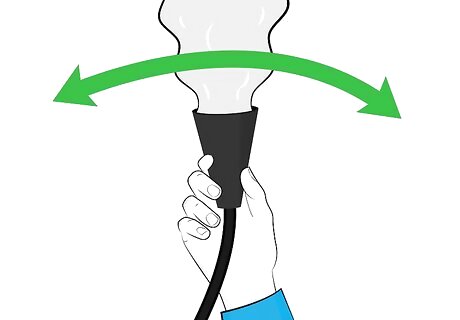
Sweep the hose from side to side. The final step of PASS is “sweep.” To extinguish all the fuel, slowly move the hose back and forth over the base of the fire while squeezing the levers. Move closer to the fire as the flames die down. Continue discharging until the fire goes out. This includes any glowing embers, which can reignite.
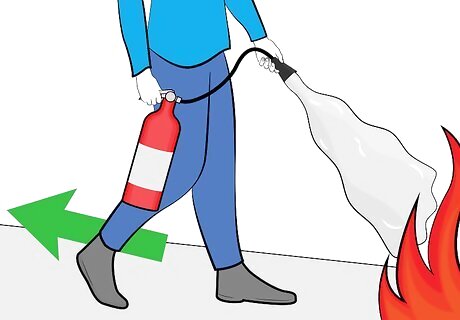
Back away and repeat if the flames flare up. Watch the fire closely to ensure the flames don’t flare up again. Back away slightly if they do. Aim the hose again, squeeze the lever, and sweep the hose across the base of the fire again to extinguish it. Never turn your back on a fire. Always be vigilant about where the fire is and what it’s doing.
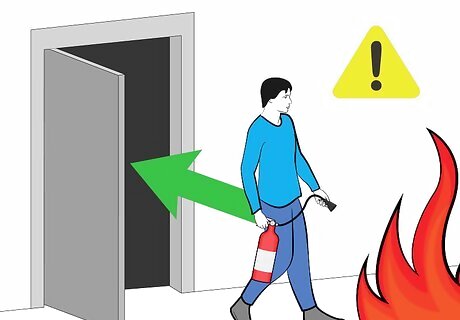
Leave immediately if you're unable to extinguish the fire. The average extinguisher will have enough agent inside for about 10 seconds of use. Back away and leave immediately if the fire isn't out when the extinguisher is fully discharged.
Using a Fire Extinguisher Safely
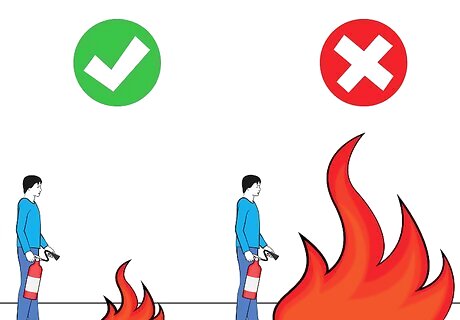
Use a fire extinguisher for small, contained fires only. Fire extinguishers are not meant to fight large or growing fires. Only attempt to fight a fire if the flames are shorter than you and if the flames are contained in a small space. Evacuate immediately if the flames are taller than you or if the fire is spreading and growing. An example of a contained fire is a wastebasket fire. The walls of the wastebasket contain the fire and won't spread.
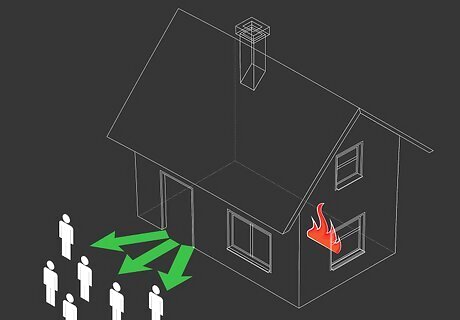
Get everybody out or away from the area before using an extinguisher. Avoid tackling a fire on your own with a fire extinguisher unless you know everybody else is safely away from the affected area. Only proceed with using a fire extinguisher if you can safely fight the fire and have a clear escape route.
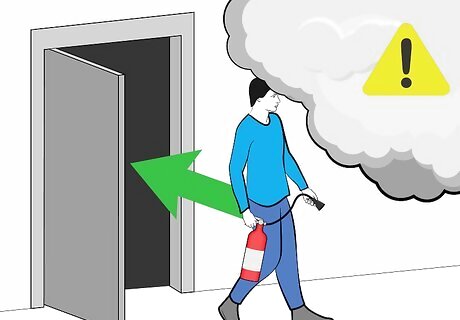
Evacuate a room that’s filled with smoke. Never fight a fire on your own if the room is full of smoke. Smoke inhalation can lead to unconsciousness, and you'll be stuck in the room with the fire. If there’s lots of smoke in the room, cover your mouth and get down on the ground. Stay low to avoid the smoke and crawl out of the room to safety.
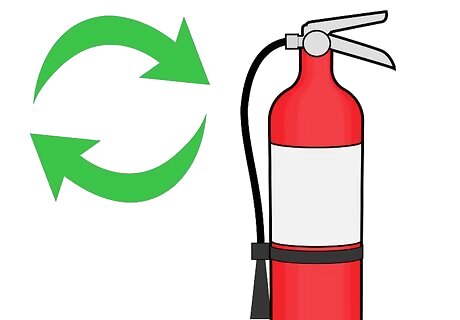
Replace or recharge your fire extinguisher as soon as possible. Some fire extinguishers are disposable and must be discarded once they’re used. Others are rechargeable and can be refilled with agent and re-pressurized. If your extinguisher is rechargeable, do it as soon as possible. Don't put it off; otherwise, you might be stuck without a working fire extinguisher during the next emergency.
Choosing the Right Extinguisher
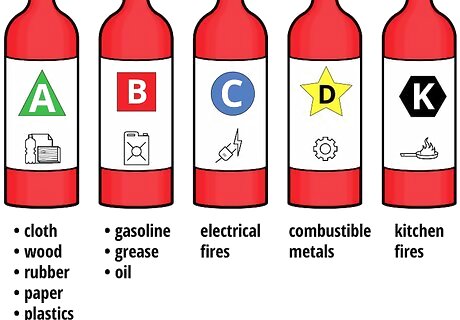
Choosing the right class of extinguisher can make a big difference when putting out a fire. Fire extinguishers are loaded with different dousing agents to fight specific classes of fires. Some types of extinguishers are more effective against certain fires, while others can actually make a specific kind of fire worse. Before trying to put out a fire, make sure you know the fire fuel, and only proceed if you have the right type of fire extinguisher. Class A: Suitable for cloth, wood, rubber, paper, various plastics, and regular combustible fires. The extinguishing agent is water or foam. Class B: Suitable for gasoline, grease, and oil fires. The extinguishing agent is a dry chemical or carbon dioxide. Extinguishers smaller than 6 pounds (2.7 kg) are not recommended. Class C: Suitable for energized electrical fires. The extinguishing agent is a dry chemical or carbon dioxide. Class D: Suitable for combustible metals. The extinguishing agent is a dry powdered chemical. Class K: Suitable for kitchen fires, including oil, grease, and fat. The extinguishing agent is a wet or dry chemical. Class ABC: This is an all-purpose fire extinguisher that works on class A, B, and C fires. The extinguishing agent is a dry chemical.












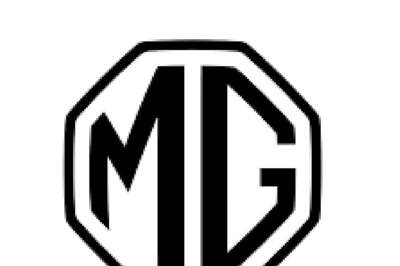







Comments
0 comment